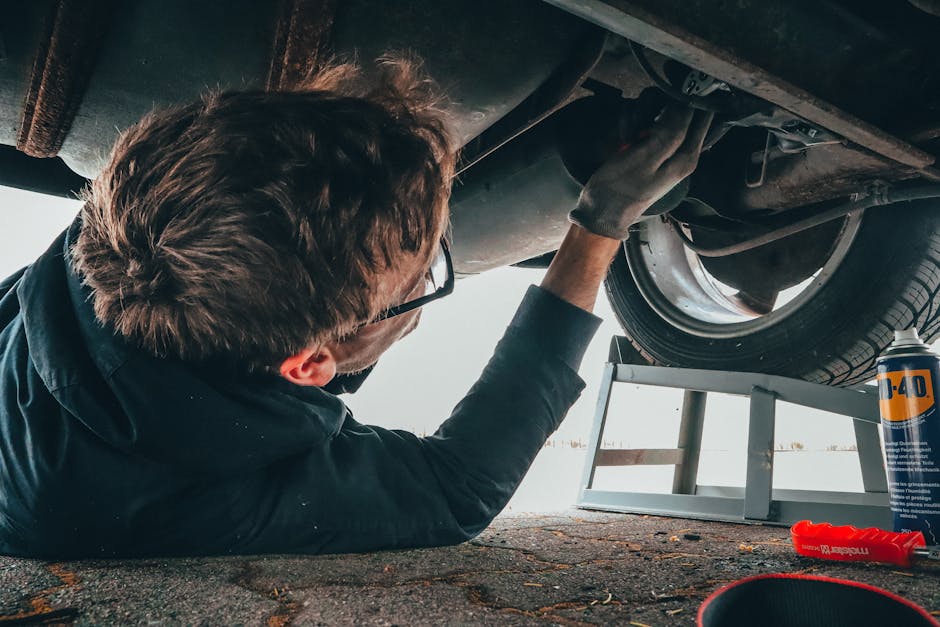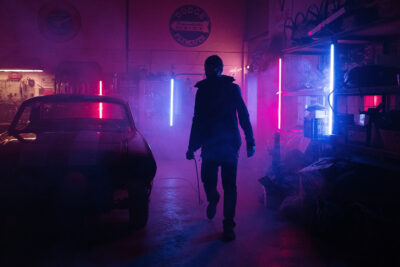How To Fix Car Speaker Distortion
Today we discuss How To Fix Car Speaker Distortion. Car speaker distortion is a common issue that many car owners encounter, but it doesn’t have to ruin your audio experience. In this guide, we will explore the various causes of car speaker distortion and provide you with simple yet effective solutions to fix the problem.
Whether you’re an audiophile or simply enjoy listening to your favorite tunes while driving, this article will equip you with the knowledge and techniques to restore crystal-clear audio quality in your car. So, buckle up and get ready to say goodbye to those annoying crackling sounds and hello to a more enjoyable and immersive listening experience on the road.
Imagine cruising down the highway, wind in your hair, and your favorite song playing in the background. Suddenly, the sound quality takes a turn for the worse, leaving you frustrated and longing for that crisp and clear audio you once enjoyed.
Car speaker distortion can be a real buzzkill, but fear not! With the right guidance and a little bit of know-how, you can easily troubleshoot and fix this common issue yourself. In this comprehensive guide, we will delve into the world of car audio and explore the primary culprits behind speaker distortion, from damaged cones to improper installation.
We’ll also walk you through step-by-step solutions to address each problem, ensuring that you can enjoy your favorite tunes without any annoying crackling or muffled sounds. So, rev up your engines, and let’s dive into the world of car speaker distortion and how to fix it like a pro.

How to Fix Car Speaker Distortion:
Car speaker distortion can be a frustrating problem that affects the audio quality of your vehicle. When your car speakers are producing distorted sound, it can make listening to music or audio in your car less enjoyable. However, there are steps you can take to fix the issue and restore the clarity and quality of sound in your car. In this article, we will guide you through the process of fixing car speaker distortion, step by step.
Step 1: Identify the Source of Distortion:
The first step in fixing car speaker distortion is to identify the source of the problem. Distortion can be caused by various factors, such as damaged speakers, loose connections, or issues with the audio source. Start by playing different audio sources, such as the radio, CD player, or Bluetooth, to determine if the distortion occurs with all sources or only specific ones. This will help you narrow down the potential causes of the problem.
Next, check the speaker cones for any visible damage, such as tears or holes. Damaged speaker cones can cause distortion, and if this is the case, the speakers may need to be replaced. Additionally, inspect the speaker connections to ensure they are secure and properly connected. Loose connections can also lead to distortion and can be easily fixed by tightening the wires or connectors.
Step 2: Adjust the Equalizer Settings:
Once you have identified and addressed any physical issues with the speakers and connections, the next step is to adjust the equalizer settings. The equalizer allows you to fine-tune the audio frequencies to achieve the desired sound quality. Start by setting all the equalizer bands to their default or neutral positions.
Play some audio and listen for any distortion. If you still notice distortion, gradually adjust the equalizer bands one at a time, testing the sound after each adjustment. Pay attention to the frequencies that are causing the distortion and try reducing or increasing their levels to find the optimal settings. Keep in mind that the ideal equalizer settings may vary depending on your personal preferences and the type of music or audio you listen to.
Step 3: Upgrade the Audio System:
If you have tried steps 1 and 2 without success, it may be time to consider upgrading your car’s audio system. Older or lower-quality speakers and audio components may be more prone to distortion. Upgrading to higher-quality speakers, amplifiers, or head units can significantly improve the audio quality and reduce the chances of distortion.
When selecting new audio components, consider factors such as power handling, frequency response, and impedance compatibility with your car’s electrical system. It is also recommended to consult with an audio professional or do thorough research to ensure you choose the right components for your specific car model and audio preferences.
Step 4: Regular Maintenance and Care:
Prevention is always better than cure, and this applies to car speaker distortion as well. Regular maintenance and care can help prevent future issues and extend the lifespan of your car’s audio system. Keep your car interior clean and free from dust and debris that can affect the performance of the speakers. Avoid exposing the speakers to extreme temperatures or moisture, as these can cause damage.
Additionally, be mindful of the volume levels you use when playing audio in your car. Playing music or audio at excessively high volumes can strain the speakers and lead to distortion. It is recommended to keep the volume at a reasonable level and avoid prolonged exposure to high volumes.
Step 5: Seek Professional Help:
If you have followed all the previous steps and the distortion issue persists, it may be time to seek professional help. Car audio specialists have the expertise and knowledge to diagnose and fix complex audio issues. They can perform advanced tests, identify hidden problems, and provide the most appropriate solutions for your specific car audio system.
When choosing a professional, consider their experience, reputation, and customer reviews. It is also advisable to get quotes from multiple professionals to ensure you are getting a fair price for the services provided. Remember to communicate the symptoms and steps you have already taken to help the professional better understand the issue.
Step 6: Enjoy Distortion-Free Audio:
By following these steps, you can effectively fix car speaker distortion and enjoy high-quality audio in your vehicle once again. Remember to start by identifying the source of the distortion, followed by adjusting the equalizer settings and considering an upgrade if necessary.
Regular maintenance and care are crucial for preventing future issues, and seeking professional help can be a viable option if all else fails. With the right approach and attention to detail, you can achieve distortion-free audio and enhance your overall driving experience.
Faqs for How To Fix Car Speaker Distortion:
Speaker distortion in a car can be caused by various factors. One common cause is when the speaker is pushed beyond its limits, either by playing music at high volumes or by sending an excessive amount of power to the speaker. Another cause can be a damaged or worn-out speaker cone, which can result in distorted sound.
To fix speaker distortion, it is important to identify and address the underlying cause. This may involve adjusting the volume levels, replacing damaged speaker components, or checking and tightening connections. It is also recommended to use high-quality speakers and ensure that they are properly installed to prevent distortion issues.
Adjusting the volume is an effective way to reduce speaker distortion. Start by lowering the volume to a level where the distortion is no longer present. Then, gradually increase the volume until you reach a comfortable listening level without any distortion. It is important to avoid pushing the volume to the maximum limit, as this can cause excessive strain on the speakers and lead to further distortion.
If adjusting the volume does not eliminate the distortion, there may be other underlying causes that need to be addressed, such as damaged speakers or faulty connections. In such cases, it is advisable to seek professional assistance or consult a car audio specialist for further troubleshooting and repair.
In some cases, damaged speaker cones can be repaired. However, the extent of the damage will determine whether a repair is feasible or if it is more practical to replace the speaker. Minor damages, such as small tears or punctures, can sometimes be fixed using specialized repair kits that are available in the market.
For more severe damage, such as a completely torn or distorted cone, it is usually recommended to replace the speaker altogether. Attempting to repair extensively damaged cones can result in subpar sound quality and further issues with distortion. It is advisable to consult a professional or an authorized service center for guidance on whether a repair or replacement is the best course of action for your specific situation.
To check and tighten speaker connections, start by turning off the car’s audio system and disconnecting the power source. Carefully remove the speaker grille or panel to access the speaker and its connections. Inspect the connections for any loose or disconnected wires.
If you find any loose connections, use a screwdriver or appropriate tool to tighten them securely. Ensure that the positive and negative terminals are properly connected to the corresponding terminals on the speaker. It is also important to check the connections at the amplifier end, as loose connections there can also cause distortion.
Yes, there are several preventive measures that can help avoid speaker distortion in a car. Firstly, it is important to avoid playing music at excessively high volumes for extended periods, as this can strain the speakers and cause distortion. It is recommended to keep the volume at a reasonable level that allows for comfortable listening without pushing the speakers to their limits.

Source: pexels.com
conclusion:
understanding and addressing car speaker distortion can greatly enhance your overall audio experience while on the road. By following the steps outlined in this guide, you can diagnose and fix common issues that lead to distortion, such as loose connections, damaged speakers, or improper audio settings. Remember to start with the simplest solutions, such as checking cables and connections, before proceeding to more complex troubleshooting methods. By taking the time to identify and resolve the underlying causes of distortion, you can enjoy clear and crisp sound in your vehicle once again.






